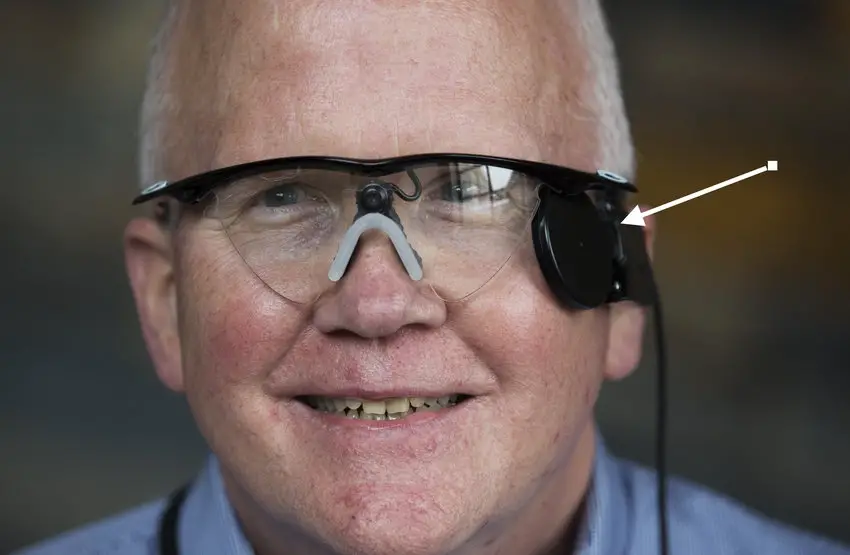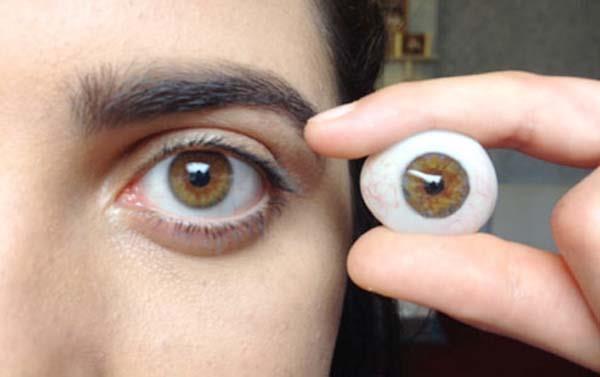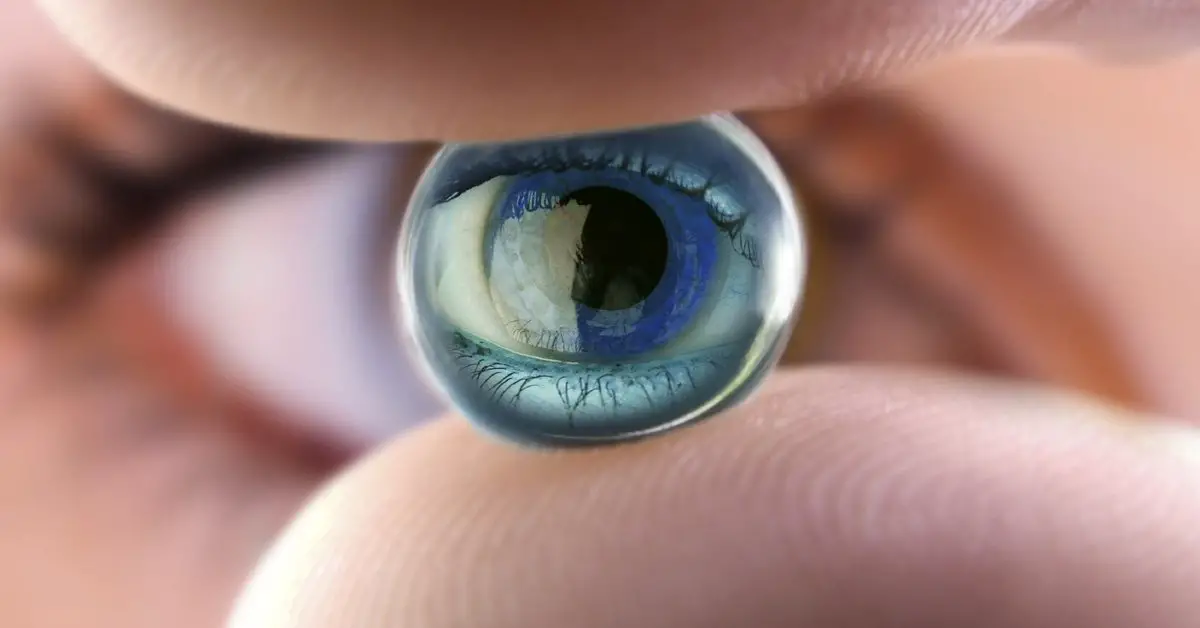Bionic Eye Implants are somewhat similar to cochlear implants, which are used to assist people with hearing loss, or to the neural link implants that are used to treat patients with neurological disorders. Although the technology associated with Bionic Eye implants is in its early stages, it has shown some promising results when tested for sheep trials. Here’s everything you need to know about Bionic Eye Implants, how it works, and the future of artificial vision systems.
The most basic question that sticks to mind is ‘Will Bionic Eye Implants take over natural eyes?’ It’s true that this World’s First Bionic Eye utilizes various forms of technology, depending on the particular eyes or the prototype. This is a relatively new method of technology. However, the potential it offers could result in the return of vision to people who otherwise struggle with the loss of vision throughout life. Though natural things cannot be changed and that is why they cannot replace the natural eyes.
Soon, human trials for Bionic Eye Implants will be started. Although, the process is still under observation. As researchers continue to research Bionic Eyes, along with the technological advances from web 1.0 to web 3.0, and beyond, many lenses and alternatives are being developed. These researches could lead to Bionic Eye solutions for a variety of causes of loss of vision in the near future.
As this technology is relatively new it is possible to imagine a variety of directions that Bionic Eyes can explore. In the meantime, understanding the available options and potential improvements will give you more information about Bionic Eye implants, and how Bionic Eyes could benefit people in the near future.
What Are Bionic Eyes?

Eyes with futuristic technology could help to restore vision for people who have difficulty seeing or are blind. It is designed to treat blindness caused by certain eye disorders like retinal degeneration.
As opposed to a prosthetic eye, Bionic Eye implants are functional, not just cosmetic. When someone becomes blind or lacks vision, they are unable to see properly. It can be caused by various reasons, including injuries or diseases to the cornea or lens as well as a loss of signals in the brain’s visual pathway or the retina becoming incapable of detecting light.
Among all, there are many Bionic Eyes that are being developed across the globe focusing on various visual pathways. The Bionic Eye that is developed in the U.S. is called one of the Argus II Retinal Prosthesis. It is currently being evaluated to help restore vision in patients suffering from age-related macular degeneration.
The Bionic Eye has been developed to restore at the very least some vision in those suffering from severe retinitis. As of now, the research is involving hundreds of individuals.
Also, read Artificial Vision: What Is A Bionic Eye? How Bionic Eye Works?
Bionic Eye Implants & Working

The implants capture images using an electronic camera and convert the pictures into a representation that has high contrast. The remaining portion is used to further process.
The Argus system consists of a pair of High-tech glasses and a camera that is small along with tiny electrodes.
The camera is located on the eyeglasses. The electrodes are inserted into the retina in the rear of the eye. When someone looks at an object, that gaze is transformed into signals. They are transmitted wirelessly to the implant within the retina.
Retinal cells get stimulated with electrodes. The result is that information is transmitted into the optic nerve. From there, the brain processes the information.
The Argus system allows people to tell the difference between forms as well as movement and light. But, it doesn’t let people perceive the same way as healthy eyes do. Researchers believe this is because of only 60 electrodes in the device.
A few patients who have received implants are able to walk across streets without assistance, and also read books that had large print. However, they were unable to precisely perceive the color.
However, in 2021, improvements in computer modeling allowed for enhancements to this Argus II Prosthetic Retinal System. In essence, scientists at USC created signals that can provide a better quality of vision and more vivid colors for people who wear the Argus II. This could open an entirely new world of possibilities for patients who require eye implants that are more effective than previously.
However, around 1 million electrodes are required for natural vision. The company that developed the implant is currently working on a model which will include the 240 electrodes as well as peripheral electrodes that will increase the size of one’s visual field.
The History of Bionic Eyes

A prototype for Bionic Eyes was created around 1755, by Charles Leroy, a French doctor. With a Leyden Jar, he released static electricity into the body of an eye-blind person. He did this using two wires. The patient reported that he felt the appearance of a flicker due to the result.
Since that time, scientists and doctors have been looking for more advanced methods to enable individuals to be able to look at and perform the under mentioned tasks:
- Recognize and find objects.
- Do specific reading tasks.
- Recognize the characteristics in an environment that are not familiar.
Also, read World’s First Bionic Eye | The Bright Sight Of The World?
Can Vision Be Restored Without Surgery?
As of now, this technology has just begun to develop. There are a few Bionic Eyes that have been tested in humans and have shown promising results. However, to ensure high-quality sight restoration, significant improvement is required.
The research continues to focus on aiding people to regain their vision without implants, too. The gene therapy program in 2021 has shown potential. Blind people experienced slight improvements in their vision following the introduction of a gene to the light-sensing algae protein. It could be an alternative treatment option that doesn’t require surgery, as Bionic implants.
Bionic Lenses

Bionic Lenses can be a second alternative, however, they are generally not recommended for people suffering from vision problems. They instead offer enhancements in the vision for people who wear eyeglasses or contact lenses. A number of companies are currently working on making Bionic Lenses, all of which employ distinct approaches and techniques.
Bionic Lenses are the substitute for the natural lenses that are present in the eyes. The idea is to remove the natural lens of a patient and place a bionic Lens to replace it. The goal is to improve vision across any distance so that the patient doesn’t experience problems regarding their vision.
A Bionic Lens is designed to control its own functions once implanted in the eye. The surgeon would then connect the muscle so it can concentrate in various ranges. This can also lead to no eye strain as these lenses will require 1/100 of the energy that a natural lens does to respond.
Earlier Status of Bionic Eyes Transplant
Around the globe, many people have had the Argus II Retinal Prosthesis system transplant. The results so far indicate that the implant is durable and safe for those suffering from an advanced form of retinitis pigmentosa.
A follow-up study conducted recently included 30 patients who had received the implant in the past five years, for 24 of them, the implant was functioning and there. Three implants were removed due to unfavorable events, and two failed devices.
In the mobility tests, the patients who received the implant walked more easily when they had the implant on than the time they switched it off.
Another study focused on people suffering from dry macular degeneration that is caused by age. A total of four people participated in the study. In the subfoveal geographical atrophy region, the device was demonstrated to trigger central vision function.
The system became operational in 2021. It was granted FDA approval and opened the way to the system’s use in more places.
Bionic Eyes can help with their eyesight when conventional techniques do not work. A specialist in eye care who is knowledgeable about this type of medicine is required. Because it’s a niche area, experts are needed.
Don’t forget to read about the emerging neurological technology. Learn What Is Neuralink? Everything You Need To Know!!
Wrapping Up:
The aim is to create Bionic Eyes that have more electrodes. The hope is that this will lead to a greater natural vision for patients who wear the implant.
In the case of Argus II, specifically, the company that developed the implant is currently working to extend its 60-electrode design to 240 electrodes. It is expected that this will bring substantial improvements in the vision for patients using the Bionic Eye implants.
Frequently Asked Questions:
Q. Can Bionic Eye See Colors?
As of now, people with Bionic Eyes will see the highly pixelated mode of an image. They won’t be able to identify the objects with their natural colors as the human eye does. The researchers are still working on the improvement of this technology.
Q. Is Artificial Vision Practical?
Yes, in today’s world where everything from legal justice via AI Judges, to the working of the brain, is dependent on AI and technology, the concept of artificial vision is also possible.

